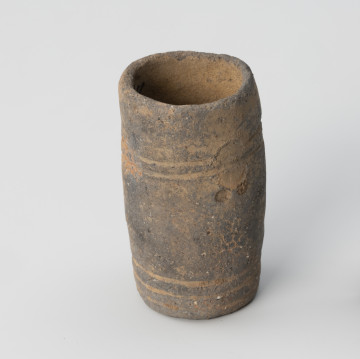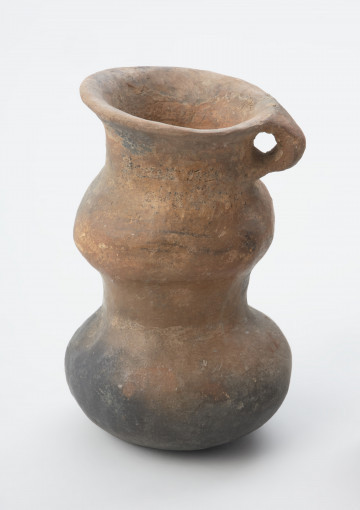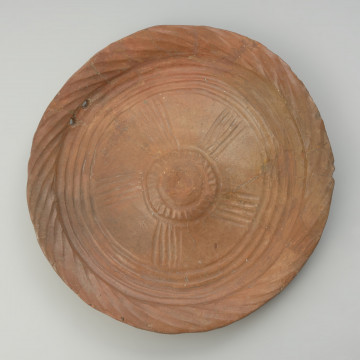
Miniature amphora
circa 1100 p.n.e. — 750 p.n.e.
National Museum in Szczecin
Part of the collection: Bronze Age
You will find the remarkably timeless design of these perfectly preserved forceps in many modern-day beauty tweezers. Unlike the tools in use today, the surface of the artefact is covered with the green, so-called noble patina which is characteristic of many archaeological finds made of bronze. Along the edges of the forceps there is a finely incised ornament, while in the middle of its arms there are three small nodules, which have a decorative function, but also mark the exact place for the fingers to operate the instrument. The object comes from a Lusatian culture burial ground discovered in the southwestern part of the Central Cemetery (formerly Hauptfriedhof) in Szczecin . The discovery of prehistoric urns in this area was first reported in the local press in April 1907. Six urns and a bronze pin were then secured by Dr Hugo Lemke (teacher, historian, long-standing chairman of the Szczecin Society for Pomeranian History and Antiquities, and honorary conservator of cultural monuments). Excavation work within the necropolis was undertaken shortly after the discovery was reported by Adolf Stubenrauch, a long-time custodian overlooking the collections of the aforementioned Society and an archaeology enthusiast. A total of 60 graves that he documented were mainly cremation burials without stone surrounds and single ashless graves. Some urns had bowl-shaped lids, a few contained small bronze objects. The tongs presented here are accessories found in grave no. 36. They were placed in a bowl-shaped urn, containing, alongside burnt bones, a very damaged bronze pin shaft. The find from Szczecin, dated to the 5th period of the Bronze Age, i.e. to the years 900-750 BC, represents a type of embellished tweezers, only known in Poland from a few discoveries limited to Pomerania. Similar artefacts are frequently documented in Denmark, Schleswig-Holstein, and northern Germany. Dorota Kozłowska
Author / creator
Object type
accessory, tweezers
Technique
casting, punching
Material
bronze
Origin / acquisition method
acquisition
Creation time / dating
Creation / finding place
Owner
Muzeum Narodowe w Szczecinie
Identification number
Location / status

circa 1100 p.n.e. — 750 p.n.e.
National Museum in Szczecin

around 1100 p.n.e. — 750 p.n.e.
National Museum in Szczecin

around 900 p.n.e. — 750 p.n.e.
National Museum in Szczecin
DISCOVER this TOPIC
Castle Museum in Łańcut
DISCOVER this PATH
Educational path